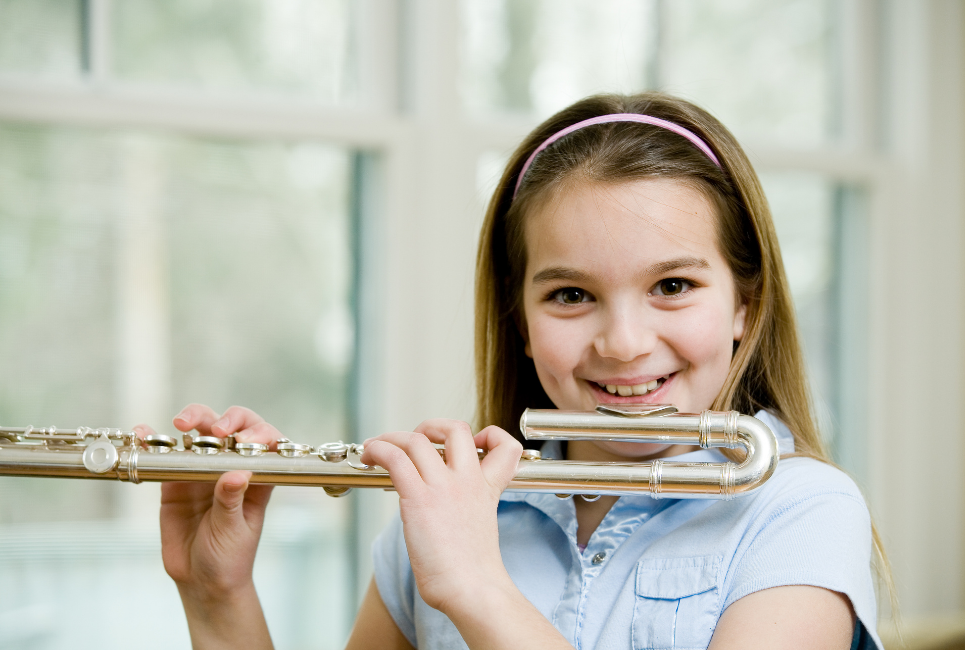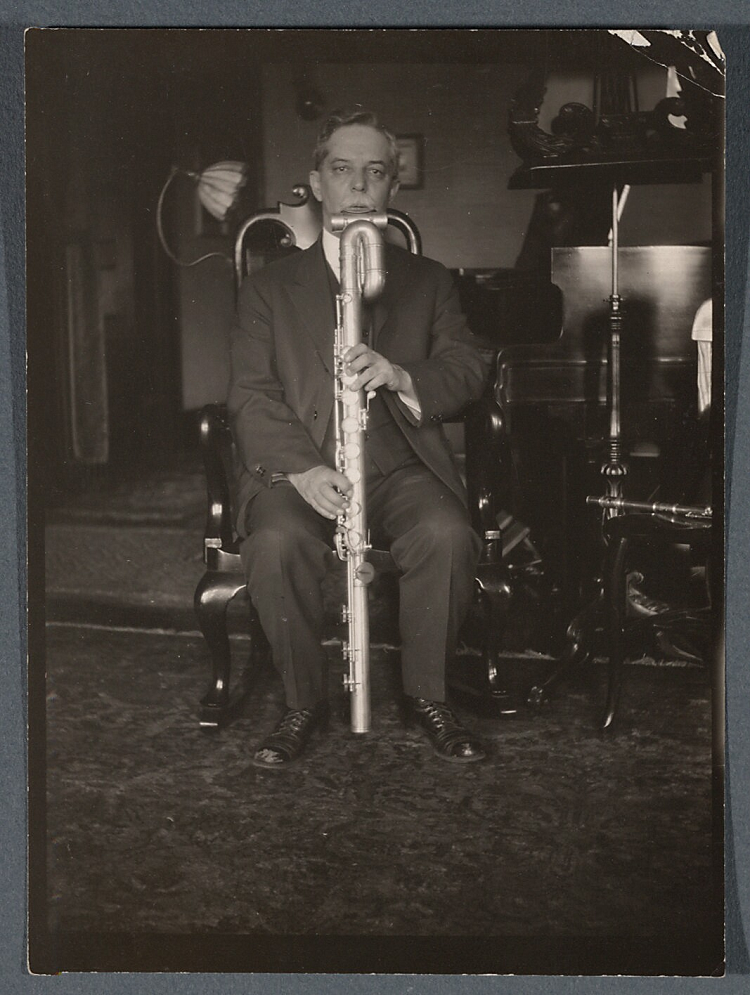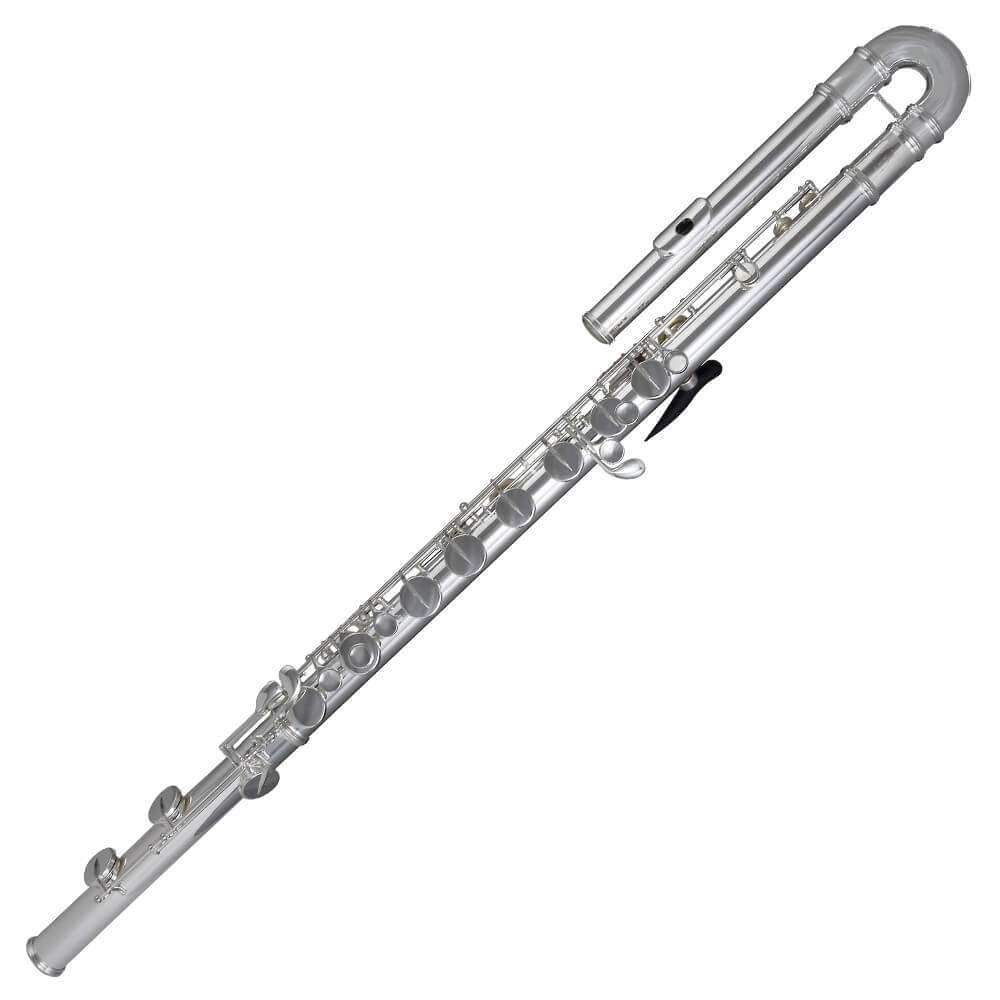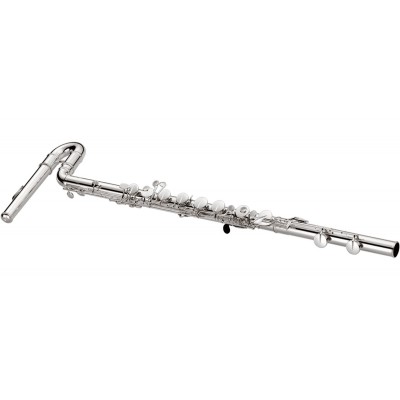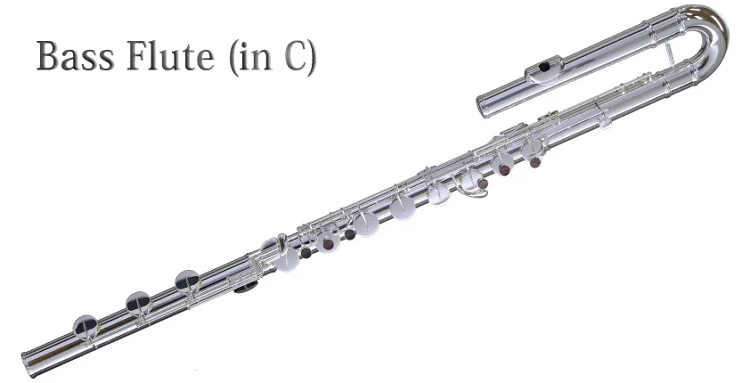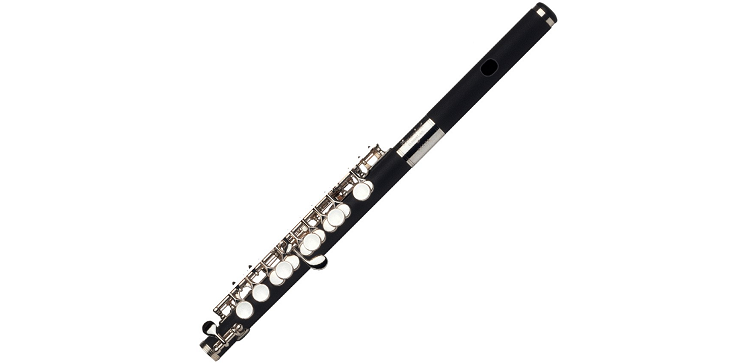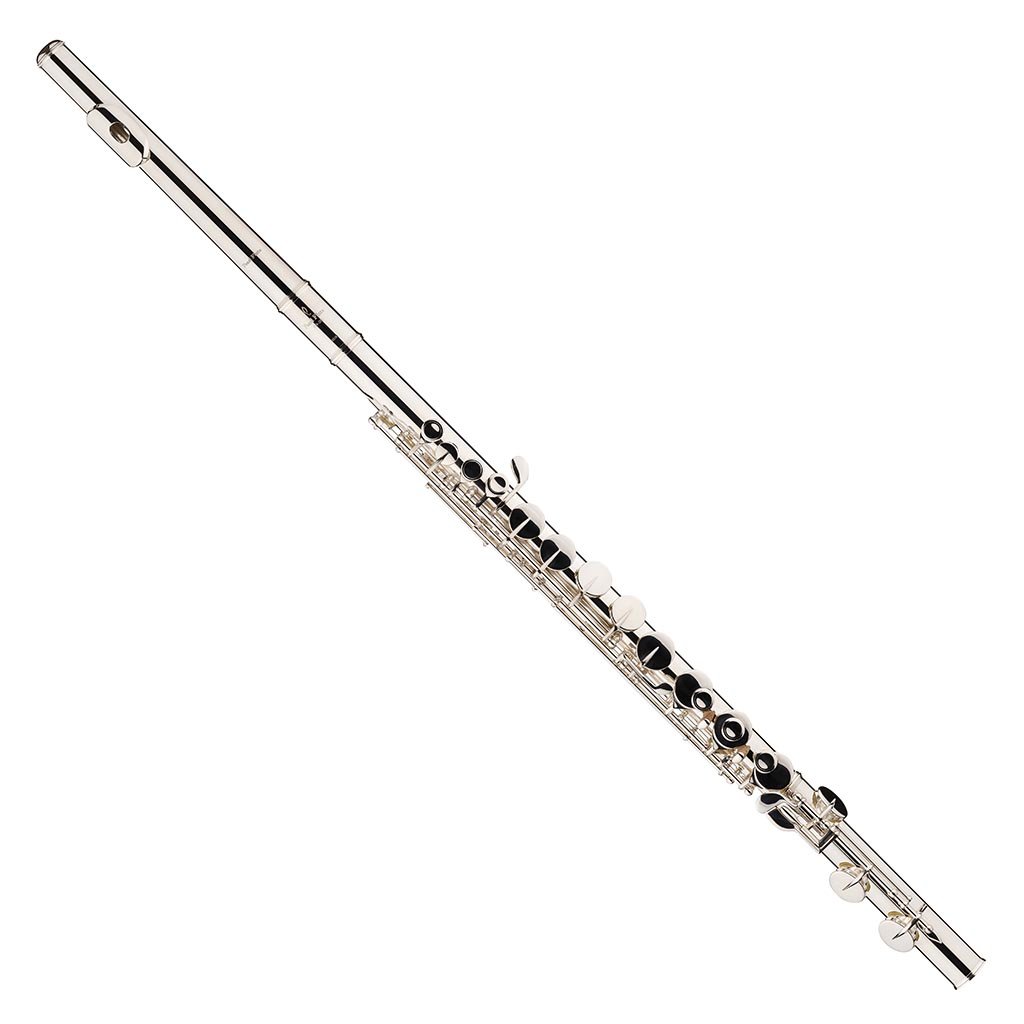- How to Find the Best Alto Trombone - May 31, 2022
- How to Find the Best Bass Trumpets - April 23, 2022
- Best Yamaha Saxophones Brand Guide - April 21, 2022
The bass flute has a haunting, ethereal sound that is easy to love. You’d like to add one to your collection, but when you start shopping for a bass flute you soon come down with sticker shock!
There’s no easy way around it: bass flutes are expensive. Before you make a big investment, you want to make sure you’re getting the best bass flute you can buy. And that means knowing something about the instrument.
Bottom Line Up Front: The Kotato Bass Flute in C is the best bass flute you can buy, but it’s also a very expensive instrument. While none of the instruments on this list is cheap, every one is a solid bass flute that will serve you well for a lifetime of fluting in a lower register.
How to Choose the Best Bass Flute
If you’re interested in buying a bass flute, here are some things to consider:
Playing Ability
The bass flute has the same fingerings as a standard concert flute, but it has a wider bore and will require more air. A bass flute’s higher registers tend to be shrill and sharp and require excellent blowing technique.
And while inexpensive student flutes are widely available, bass flutes are hard to find and expensive when you find them. If you are a beginner, you should first master the concert flute before moving on to the lower flutes.
Budget
While musicians want the best instrument they can afford, music doesn’t pay as well as many other professions. I tried to provide bass flutes in a number of price ranges. But while you can find many different types of cheap, if often unplayable, instruments online, to date nobody is making a budget bass flute.
The most inexpensive bass flute on this list will set you back over $3,000. If that’s beyond your budget, I’ve also offered two alternative instruments that will help you expand your flute collection without breaking your bank.
Usage
For most flutists, the bass flute will be a secondary instrument that sees comparatively little use onstage or in the studio. The bass flute’s sound is not strong enough to stand out in an orchestra, so there is little symphonic and orchestral repertoire for a bass flute.
Are you playing in a chamber music ensemble or flute choir, or are you going to be playing miked with a jazz or rock band? I have offered different options for different needs, all the bass flutes I have listed here are solid instruments that will be suitable for just about any situation you might encounter in your musical career.
Before you invest in a bass flute, you should do you research. To find the bass flute that’s best for you, let’s start from the beginning.
A Brief History of the Bass Flute
Gustav Holst’s 1916 score for The Planets calls for a “bass flute.” But in early 20th century England a “bass flute” was what we today call an alto flute. This flute is pitched in G, a fourth below the C flute. Today’s bass flute is also pitched in C, but a full octave below the standard flute.
In 1910 Italian flutist and instrument maker Abelardo Albisi invented a bass flute known as the albisiphone. The albisiphone was a transverse flute. Instead of holding it horizontally like smaller flutes, an albisiphonist held the instrument upright like a clarinet or saxophone.
A few early 20th century composers wrote parts for the albisiphone but the instrument never caught on. While it had a rich, beautiful tone the bass flute did not project well, especially in the lower octaves.
The problem lies in acoustical physics. It takes more air to produce a loud low note than a loud high note. Pipe organs make the room rumble by pumping pressurized air through a long tube.
A flutist blows air with their upper lip into a small hole. A bass flute is going to have a very difficult time making itself heard over a trombone, never mind an entire brass section.
Today bass flutes are most often found in flute choirs and chamber ensembles. In a smaller room, a bass flute’s sweet voice can be heard. And with amplification bass flutes can shine in recording studios and live performances anywhere.
The Best Bass Flutes
Best Beginner Bass Flute: Gemeinhardt 21BSP Bass Flute
Gemeinhardt is well-known for its commercial and student flutes, and the Gemeinhardt 21BSP bass flute is an excellent option for flute choirs and soloists alike.
The 21BSP’s headjoint, body, foot, and keys (including D and D# trill keys) are all silver-plated, and the 21BSP also comes with a case and a case cover, giving you everything you need to start your journey as a bass flutist.
The 21BSP is designed with ergonomics in mind. A left-hand bar helps keep your hand in a comfortable position while you play. And Gemeinhardt’s recently redesigned headjoint helps give the 21BSP a rich, beautiful tone that will encourage you to keep practicing.
Gemeinhardt has been making flutes for decades from its Elkhart, Indiana office, and builds instruments at all levels. The 21BSP is aimed squarely at intermediate players looking to move on to the next step in their flute playing.
At over $3,000 the 21BSP is a big investment. But if you are a serious flutist who wants to add a bass flute to your collection, the 21BSP may be the last bass flute you ever need.
Pros
- Crutch bar makes the 21BSP more comfortable to hold
- Newly redesigned headjoint improves tone and embouchure
- D and D# trill keys will come in handy on difficult passages
Cons
- Tone and timbre is not as good as other bass flutes on this list
Best Upright Bass Flute: Jupiter JBF1100E Bass Flute
Like the albisiphone, Jupiter’s JBF1100E (previously the 1125ES), is played upright with the opening facing the floor. If you are used to playing a transverse flute, you may have some difficulty getting used to the fingerings and embouchure on an upright flute at first.
But once you get used to it, you’ll find an upright bass flute makes playing easier than ever. Because you no longer have to worry about holding a long and awkward tube sideways, you will find that your hands have much more freedom in demanding passages. And because you can relax your hands across the keys, you’ll find the JBF1100E has less pad wear issues.
While bass flutes are infamous for their shrill and weak higher register, the JBF1100E has a “split E mechanism” which improves the high E’s tone quality. The silver-plated headjoint, body, and keys give the JBF1100E a warm yet brilliant tonal quality.
And because Jupiter, a Taiwanese instrument maker, got its start making student and marching instruments, the JBF1100E is built not only to sound good but to hold up to the rigors of traveling and touring.
Pros
- Upright position makes difficult fingerings easier
- Eyelet for strap makes the JBF1100E easier to hold through long rehearsals
- Split E key improves performance in high register
Cons
- Getting used to playing upright may take a while
Best Flute Choir Bass Flute: Altus Bass Flute 823E
For over 25 years Altus founder Shuichi Tanaka has been building flutes. Altus flutes have excellent intonation, carefully tuned harmonics, and uncompromised scales in every register.
Altus flutes are handcrafted to vintage flute standards, but take advantage of modern advances in technology and acoustics to produce some of the finest playing flutes around.
The 823E has a hand-carved headjoint with a sterling silver lip plate and riser. Its body and keys (including trill and split E keys) are silver-plated, with mother-of-pearl finger buttons for beauty and comfort. Its exquisite tone will provide a shimmering, crystal clear depth to your flute choir’s sound.
Altus has become particularly well-known for its low flutes, and many school music programs, flute choirs, and solo flutists have added the Altus 823E to their collection. If you want to stand out in a crowd of flutes – and blend in when necessary – you’ll love the Altus 823E.
Pros
- Handcrafted by a master flute maker
- Consistent pitch throughout the entire chromatic scale
- Altus tone is beloved by flutists and conductors worldwide
Cons
- Some say the 823 blows sharp
Best Performing Bass Flute: Yamaha Bass Flute YFL-B441II
Yamaha has been making pianos since 1900 and wind instruments since 1966. They are one of the world’s largest makers of band and orchestral instruments and Yamaha flutes are famous for their craftsmanship and attention to detail.
(Yamaha’s customer service also wins high marks for their quick attention on the rare occasions when your instrument is damaged or defective).
Yamaha’s shiny gold-brass YFL-B441II is certainly a beautiful instrument. But the YFL-B44II’s brass construction gives it a lovely warm and rounded tone and also makes it considerably lighter than most bass flutes.
The key action is buttery smooth and fast and the lower register is especially strong. Yamaha’s house sound is often described as clean, bright, accurate, and pure.
Flutists praise the YFL-B441II’s pure, strong tone and playability. Yamaha’s excellent reputation means your instrument will hold its value well should you decide to sell it. (This may not be good news for flutists looking for a cheaper used instrument)
Pros
- Lightweight and visually striking for stage performance
- Reliably excellent sound from a company with a long track record
- Smooth action makes fast passages easier
Cons
- Some people find the Yamaha house sound sterile, though most people love it
Best TOTL Bass Flute: Kotato Bass Flute in C
If you want a Kotato Bass Flute in C, be ready to wait! Every Kotato flute is made to order, with a 6-12 month wait time. Kotato & Fukushima manufacture their flutes entirely by hand.
Every tone hole is manufactured individually, then soldered to the flute. This is labor-intensive, but it results in more tightly sealed holes and a fuller, rounder sound.
Because these instruments are bespoke, you can get exactly the instrument you want. You can upgrade the silver-plated headjoint and body to solid sterling silver.
You can add a split-E key or Kotato’s “Be-Mode,” a tiny membrane that slides over the mouth hole and gives your silver flute the tone and timbre of a bamboo bass flute.
Kotato bass flute prices start at around $13,500 and can get close to $20,000 with all additional upgrades. That’s a lot of money, but you get a handmade piece of musical history that may someday land in a museum.
If the bass flute is a large part of your musical repertoire and you want a showpiece instrument, Kotato may be the flute you’re looking for.
Pros
- Kotato flutes are hand-crafted works of art.
- Be-Mode adds extra possibilities to your bass flute sound
- An heirloom-quality instrument
Cons
- Expensive
- 6-12 month wait for your new flute
Alternatives
If you’re looking for a second flute, you will get more use out of a piccolo. There is a much larger repertoire for the piccolo than for the bass flute, which means there is a greater demand for piccolo players.
A piccolo can reach as high as C8, the highest note on a piano, so it can add sparkle on an arrangement’s highest end. But while you can find piccolos at bargain-basement prices, you really shouldn’t.
Unlike the bass flute, the piccolo has no problems with projection, and a badly-designed cheap piccolo will produce sounds that violate the Geneva Convention.
Another option is an alto flute in G. While alto flutes are nearly as expensive as bass flutes, far more alto flute music is available. As mentioned earlier, Holst uses alto flutes in The Planets.
The flute solo in The Mamas & The Papas “California Dreamin'” uses an alto flute, as does Howard Shore’s soundtrack to Lord of the Rings. The alto flute has a wider bore than a standard flute in C but a narrower bore than a bass flute.
This means that while an alto flute can’t get as low, its lowest register projects more clearly than a bass flute.
Best Piccolo: Gemeinhardt 4P Student Piccolo
Тhe Gemeinhardt 4P Student Piccolo is made with a composite material that is warmer than metal piccolos but brighter than wood. For musicians, composite piccolos offer the best of both worlds.
The 4P will sound great in an orchestral setting playing the double pianissimo opening to Britten’s Sea Interludes or on a field rising above the din of a marching band.
While Gemeinhardt sells the 4P as a student instrument, this piccolo is certainly up to the tasks of professional work. Its conical bore gives the 4P a strong tone across all registers, and its durable build will be appreciated in recording studios or on tour.
At around $900, the Gemeinhardt 4P will be a great second instrument for any flutist.
Pros
- Mellow and rich tone which goes high without getting shrill
- Comes with 5-year warranty
- Composite material not subject to humidity issues like wooden piccolos
Cons
- You may want a better instrument if you play a lot of piccolo repertoire
Best Alto Flute: Pearl Alto Flute PFA-201
While they are more famous for their drums, Japanese instrument maker Pearl also makes some excellent flutes at every performance level. The Pearl PFA-201 has excellent hand action and balance, with a wide dynamic range that makes it suitable for solo or ensemble work.
Pearl’s patented One-Piece Core Bar and Pinless Construction guarantees smooth and easy action, as well as added durability. You can choose between a straight and curved silver-plated headjoint, both with a .925 silver lip-plate.
You can also get the Pearl alto flute with a .925 silver headjoint (PFA-206) or with a .925 silver headjoint and body (PFA-207). All Pearl flutes come with a French-style alto flute case.
Pros
- Straight or curved headjoints
- Options for upgrades in materials
- Powerful sound and excellent playability
Cons
- Some flutists find Pearl’s key placement awkward
Frequently Asked Questions (FAQ)
Answer: Contra alto flutes are available in G (a perfect fourth below the bass flute) or F (a fifth lower). A contrabass flute plays a full octave below the bass flute.
A contrabass note with a B attachment can play a B1, a step below the cello’s lowest note. And the rarely seen double contrabass flute can play down to C1, the lowest note on double bass!
While these are the lowest flutes in standard production, Italian craftsman Francesco Romei and flutist Roberto Fabbriciani have built an 8-meter (26-foot) hyperbass flute that can reach C0, lower than a standard piano.
Answer: The fingerings on a bass flute are identical to the fingerings on a standard concert flute in C, but the tone holes are more widely spaced apart. Flutists with very small hands might find the bass flute uncomfortable over long hours of practice.
The bass flute is longer and heavier than a concert flute, which can make it a bit more awkward in performance.
The larger embouchure hole requires more air, and the bass flute’s higher register is thin, shrill, and sharp for all but the most skilled flutists. Beginners will do better mastering their technique on a concert flute before trying a bass flute.
Answer: The bass flute’s sound is haunting on soft passages. But as the music swells, the bass flute often gets swallowed up in crescendos. Unamplified bass flutes can work in flute choirs and chamber music in smaller performance spaces. In larger settings, the bass flute will benefit from amplification.
Some bass flute players use flute-specific condenser microphones, which are available in wired or wireless configurations. Others prefer to use stage microphones for solos. If you are going to be playing a bass flute in any but the quietest settings, you will almost certainly need to learn how to amplify your instrument.
Conclusion
While all the bass flutes listed are solid performers, each has particular strengths.
If you are looking for a reasonably priced second instrument, the Gemeinhardt 21BSP is the best bass flute for you. While Gemeinhardt aims the 21BSP at the intermediate flute market, it is well suited for touring and light professional work.
Stage performers will enjoy the Yamaha YFL-B441II for its visual appeal, its light weight, its easy action, and its clean, clear Yamaha sound. Yamaha is a favorite with professional musicians thanks to its tight quality control and excellent customer service.
If you want the absolute finest bass flute available, you need to check out Kotato’s Bass Flute in C. You will wait months and spend lots of money, but Kotato flutes are handmade works of art that are highly sought after by professional flutists.
The best bass flute is the one that you enjoy playing the most and the one that lets you play at your absolute best.
Do your research, talk with other flutists, and try to get as much hands-on experience as you can with different bass flutes so you can decide for yourself which flute works for you. Best of luck and happy playing!
Fore more interesting readings check out:
- Mendini C Flute Review and Guide
- How to Find the Best Flute Stand [2022]
- Cecilio Foldable Flute Stand Review and Guide
- How to Find the Best C Flute: Our Top Picks!

